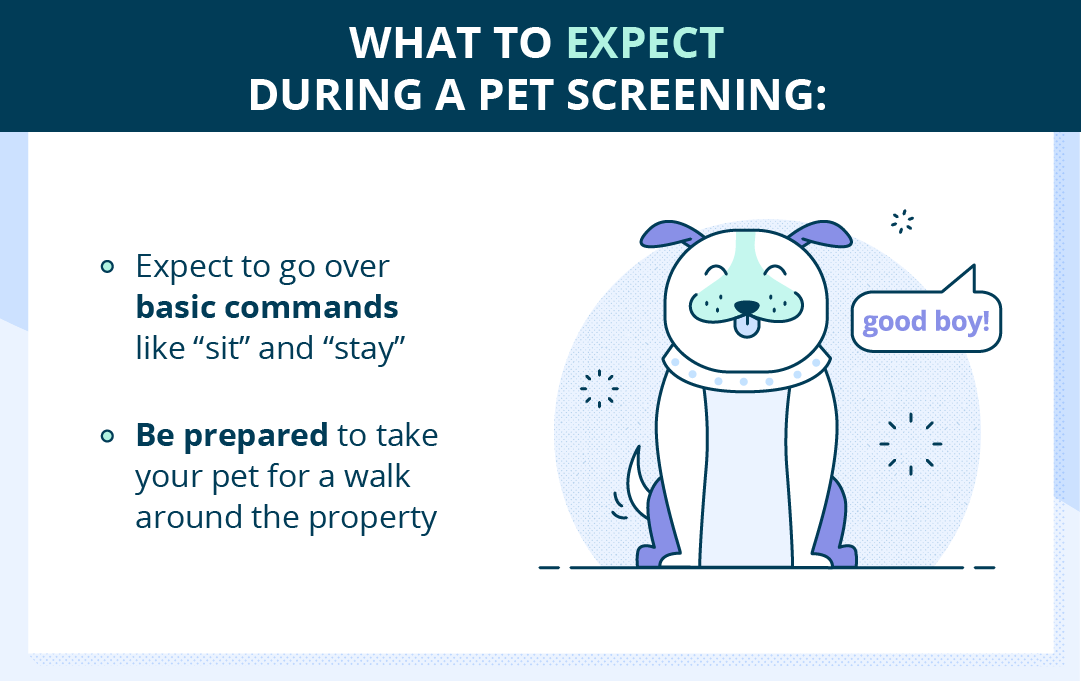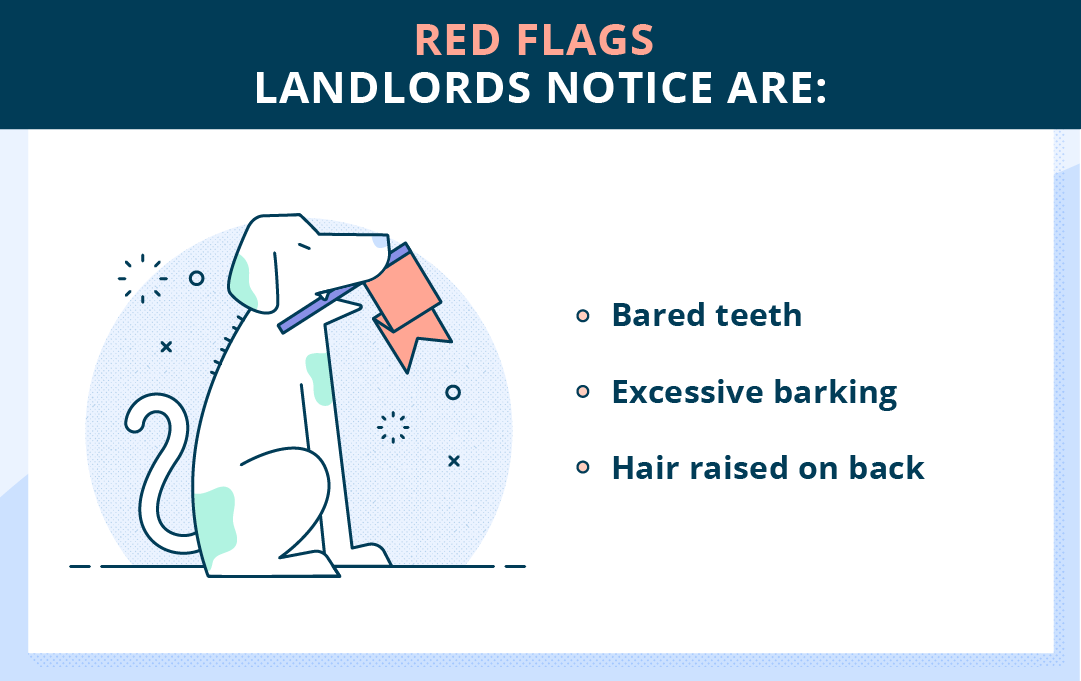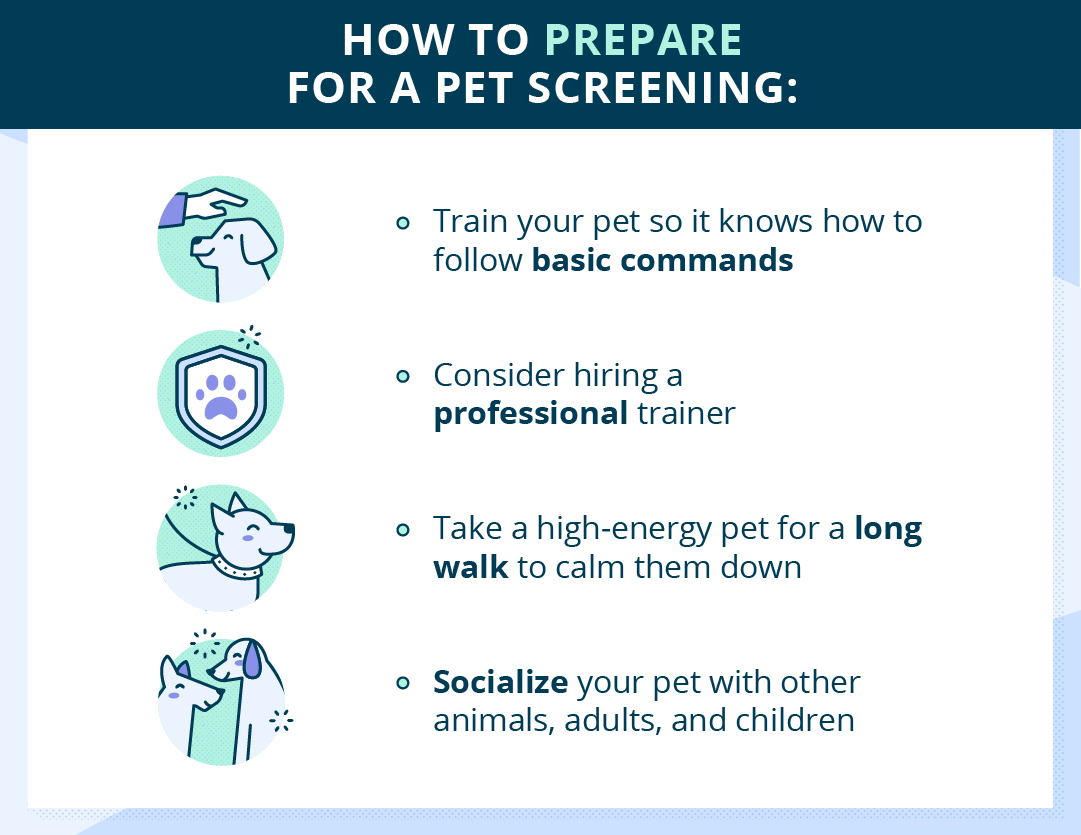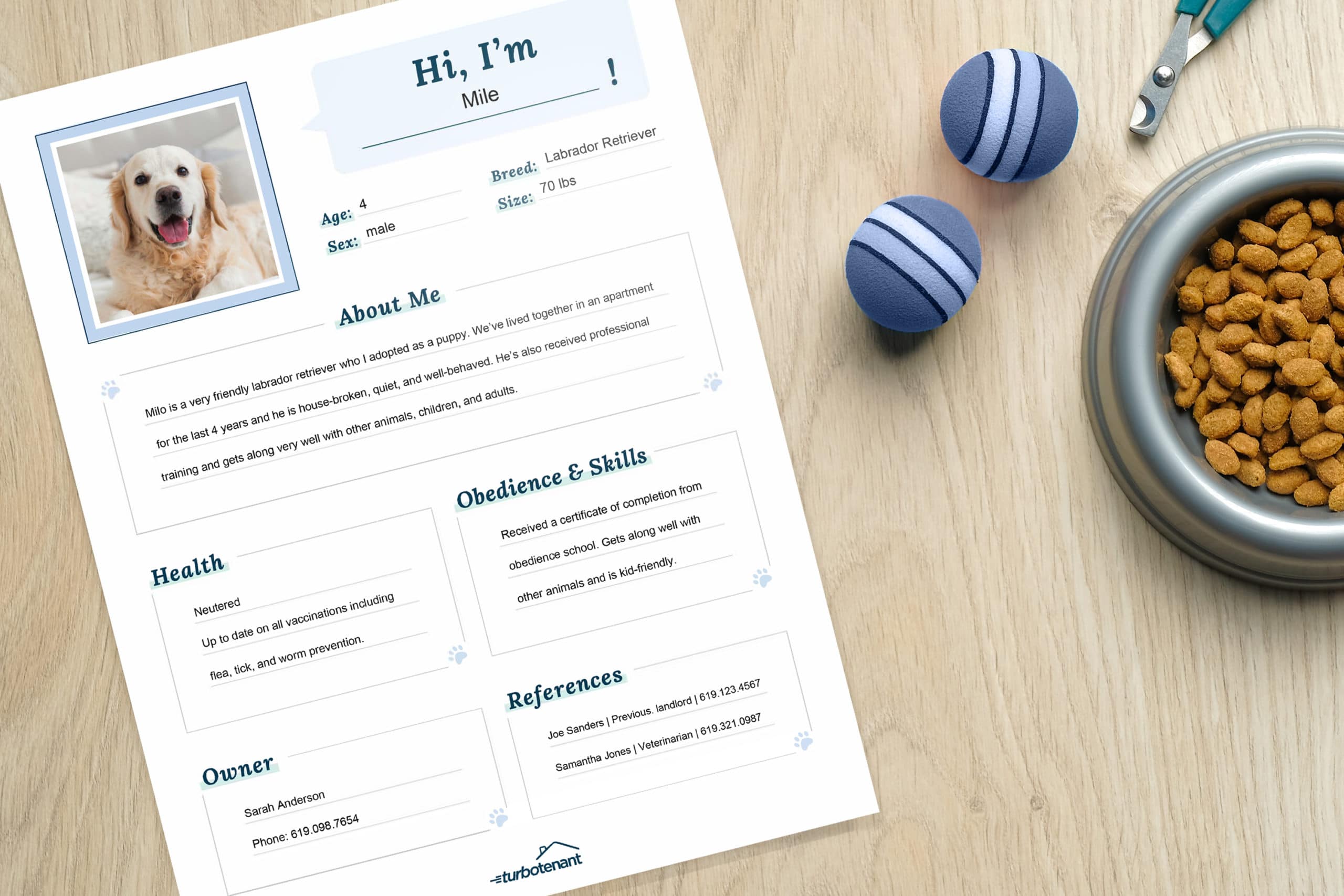A pet screening is a background check conducted through a third-party service. This process gives a landlord insight into an applicant’s pet’s behavior, personality, and health.
This guide will walk you through the pet screening process, offering tips for both landlords and tenants. Let’s go over what to expect during a pet screening, tips to make a great impression, and how to create a pet resume.
Marketing. Applications. Leases. Payments.
Tenant Pro Tip: Give yourself the bandwidth to focus on your pet while prepping for screenings by hiring professional local movers to worry about the heavy lifting! For more moving resources, check out our Renter’s Toolkit.
What Tenants Should Expect During a Pet Screening
Now that you’ve picked a possible rental, you have to prove your pet is a great match. Most pet screenings follow a similar process. Often, you and your pet will meet in person with the landlord for an initial greeting. If you have a dog, the landlord may go through basic commands with them like “sit” and “stay.” This will give them an idea of how your dog will react to commands coming from other people or tenants in the building.
Then, your dog may be walked around the building to see how they feel in their new environment and if they’re leash-aggressive or not. This test run allows the landlord to watch your pet’s behavior in different potential scenarios, such as running into other dogs or kids.
If you have a cat or another pet that isn’t typically trained, the landlord will likely have questions about their temperament and living arrangements (indoor, outdoor, in a tank, etc.).
Also keep in mind that for some rentals, landlords may also ask if you’re able to provide a pet deposit to compensate for any potential wear and tear of the property.

Things Pet Screeners and Landlords Look For
Allowing pets in a rental can be a risk in many landlords’ eyes, so there are a few red flags that they’ll quickly take note of and look for in your pet.
Mainly, landlords want to make sure that your pet won’t be aggressive or harmful to others on the property. Behavior that comes off as aggressive in pets includes bared teeth and/or growling and hair that is raised on the back.
Other red flags that could make your landlord hesitant include excessive barking — they won’t want to deal with noise complaints from other tenants. Be especially aware of this if you’re planning on moving into a smaller complex!

Pet Screening Checklist for Landlords
Finding the right tenant for your property is important; myriad factors go into the decision process. Here are a few things you should ask when renting to a tenant with pets:
- What type of pet do you have?
- How long have you owned your pet?
- Are you able to provide a letter from your vet confirming your pet is healthy?
- Can you provide a written reference for your pet from a current landlord?
- Does your pet have any behavioral or medical problems? If so, what training or treatment are you using?
- Who cares for your pet if you’re away on vacation or during a medical emergency?
- Can you pay a pet security deposit if asked?
- Is your pet housetrained?
- How much time does your pet spend alone each day?
This list of questions will help you feel more comfortable finding the right fit for your rental and help make that process easier.
How to Prepare Your Dog for Screening
While many types of pets are screened, dogs are the most common – so we’ll offer tips for dog screenings. Before your in-person meeting, you’ll want to train your dog so that it can follow basic commands.
Basic training is ideal for all pets, but making sure your dog is brushed up on their skills beforehand can prevent possible slip-ups when you’re going through the process. If they need a little extra help, consider working with a certified professional trainer to get them in tip-top shape.
For high-energy pets, consider taking them for a long walk or some playtime in the park before your meeting. This will ensure they’ll be worn out and have calmer energy before greeting the landlord and walking around the apartment complex.
Also, make the effort to socialize your pet with other animals, adults, and children leading up to your screening. You’ll want them to be as comfortable as possible, and exposing them to different situations will set them up for success.

How to Create a Pet Resume + Tips
In addition to preparing for the pet screening, creating a pet resume will make you and Fido stand out from the crowd. Like a job application for humans, a pet resume will need to cover the basics about your dog and why they’re a good fit for the property. There are many benefits of creating a pet resume, including:
- Helps mitigate strict breed and size restrictions
- Proves you’re taking the application process seriously
- Eases concerns about pet health and behavior
- Helps answer all possible questions a landlord may have
- Can turn pet-tolerant landlords into pet-friendly ones
Build your pet resume in a few easy steps.
1) Choose the Perfect Photo
Make your potential landlord fall in love after seeing an adorable photo of your pet. Including a beauty shot of your pet in a happy and calm setting is the first step in making a great impression on their resume. You can even choose a photo of your pet with children or other animals to show that they get along.

2) Fill in the Details
Include these critical elements in your pet resume:
Name
If your pet’s name is either inappropriate or violent, think about changing it on paper for the sake of a good impression.
Age
Many landlords try to steer clear of puppies with their chewing and messy nature, so keep in mind that having a pet that’s on the older side may be more beneficial to you. If you do have a puppy, consider taking it to a training school so you can show the landlord that they’re well-behaved.
Breed
Listing the breed is especially important if you have a dog since many properties don’t allow certain breeds. If your pet is restricted at the property you’re applying to, set up some face-time with the landlord so they can get to know your pup better.
Keep in mind that if your pet is a service animal or an emotional support animal, they can not restrict you from bringing it onto the property. To learn more, read the Fair Housing Act to get a better understanding of your rights and the required documentation you’ll need to provide.
Size
Your pet’s size gives the landlord a feeling of how much damage could potentially happen in their rental, especially if it’s a small space.
Health
Include a health summary for your pet! Indicate whether your pet has been spayed or neutered. You also need to include if they are up to date on vaccinations; feel free to provide documentation from your vet — this may even be a requirement depending on the landlord.
You can also include how much exercise your pet gets and what they do to stay active. Although it’s not extremely important, it can support the idea that your pet’s in good health.
Obedience and Skills
This is the section where you can highlight their behavior traits. Here you can cover the training your pet has which will give the landlord a better understanding of how they interact with the environment.
For instance, if your pet has been to a professional trainer, list it! Have they received any certificates or awards during their training? Include those details as well.
Does your pet have other special skills that you’re proud of? Showcase the fact that they were a therapy pet, seeing-eye dog, or perhaps won gold at a dog show! This is also an ideal place to state that your dog behaves well around other pets, adults, and kids.
3) Add an “About Me” Section
Add an “about me” section to describe the relationship with your pet and that they’re well cared for. Include how long you’ve had your pet, if they’ve lived in an apartment before, how often they go for walks, if they shed, why your pet will be a great fit for the apartment, and why your pet will be a great tenant.
4) Include References and Your Contact Information
Lastly, don’t forget to include your contact information. A reference from a past landlord is also extremely helpful as it proves your pet is a good little critter.
Pet Resume Template

Print out this template to easily create your pet resume and impress your landlord.
Renting a new apartment is an exciting time, especially if you can do it with your pet! As your landlord might be getting ready to give you a tenant screening, make sure Fido will pass too with this guide.
